#Domenico Morelli
Explore tagged Tumblr posts
Text

Domenico Morelli - Ritratto di Concettina (1872)
139 notes
·
View notes
Text

Domenico Morelli - Embalming of the body of Jesus Christ after crucifixion.
#Domenico Morelli#Embalming of the body of Jesus christ after crucifixion#Christ#Embalming#shroud#dead#death bed#praying#crying#mourning
25 notes
·
View notes
Text

Christian martyrs, Domenico Morelli, 1851
#christian martyrs#domenico morelli#19th century#museo nazionale di capodimonte#art history#art#italian art#aesthethic#painting
13 notes
·
View notes
Text

'Self Portrait' as painted by Domenico Morelli (1826-1901).
9 notes
·
View notes
Text

Domenico Morelli, Cristo Tentado (1885)
13 notes
·
View notes
Text
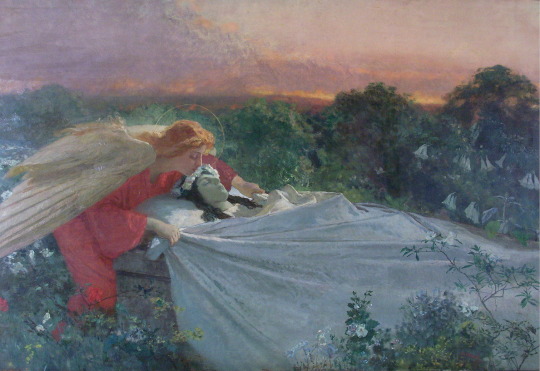
The Angel of Death
Domenico Morelli
oil on canvas, 1897
38 notes
·
View notes
Text

after morelli - graphite & white chalk | 20 x 15
3 notes
·
View notes
Text
Giovanni Battista Crema: Il genio artistico ferrarese tra Divisionismo e Simbolismo
Esplorando la vita e l’arte di Giovanni Battista Crema, pittore ferrarese del Novecento, maestro del Divisionismo e cronista della guerra Chi era Giovanni Battista Crema?Giovanni Battista Crema (Ferrara, 13 aprile 1883 – Roma, 15 dicembre 1964) è stato uno dei protagonisti più affascinanti dell’arte italiana tra Ottocento e Novecento. Pittore e giornalista, ha attraversato i movimenti artistici…
#Accademia di Belle Arti#Alessandria today#arte e guerra#arte figurativa italiana.#Arte Italiana#arte italiana XX secolo#Arte moderna#avanguardie artistiche#Avanti!#Biennale di Venezia#cultura ferrarese#disegni di guerra#divisionismo italiano#Domenico Morelli#Duilio Cambellotti#esposizioni d’arte#esposizioni internazionali#Ferrara#Ferrara artisti#Giacomo Balla#Giovanni Battista Crema#Google News#italianewsmedia.com#medaglia d’oro Livorno#Michele Cammarano#opere di Giovanni Battista Crema#paesaggi italiani#Palazzo Crema Ferrara#Palazzo dei Diamanti Ferrara#Pier Carlo Lava
0 notes
Text

Man in northern Italian dress with a carnation wooing a young woman Domenico Morelli (1826-1901, Italian)
#dianthus#carnation#painting#figurativepainting#genre painting#italian art#19th century painting#domenico morelli
0 notes
Text
The lost name
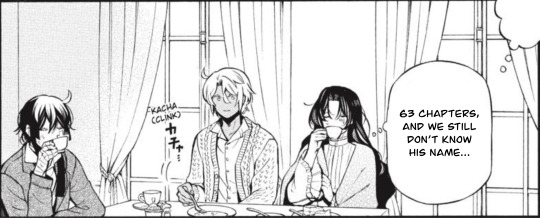
I think Vanitas’s real name could be Deucalion.
In this text I’ll cover my reasons for choosing this name, its connection to the story of Noah and the myth of Pandora and how would it correlate with the relationship of Vanitas and Noé.
Posting this as an actual answer to @scar-eyejolteon14 as promised here.
The lore of Deucalion
It all started when I was wondering what kind of name I could give Vani if I were to draw him as a Chasseur (ordinary human, who’ve never met Luna and never inherited their name). I began with the most obvious thing: checking Vani’s wiki page for existing details and references. I went with his zodiak sign, Aquarius, as the staring point, because stars and celestial bodies are recurring theme in VnC and well why not?..
The next obvious place to go is wiki page for Aquarius. Here we come across a fun thing: Babylonian star catalogues. They contained lists of stars, constellations, and planets.
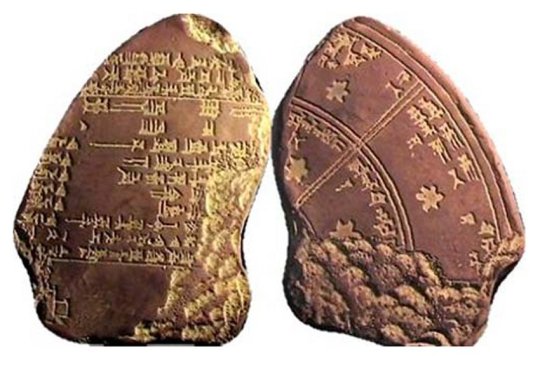

I found the first picture on a somewhat strange website, but whatever. This is a fragment of a circular star calendar, which belonged to the library of King Ashurbanipal (668-627 BC) in Nineveh. The second picture is a star list, found in Uruk (320-150 BC). It had information on all constellations such as names, number of stars, their distance, etc. Just so we understand that astronomy was a big deal there.
And yes, the capital of Babylonia was Babel — that one city with the tower (The Book of Genesis, Genesis 11) which is referenced in VnC.

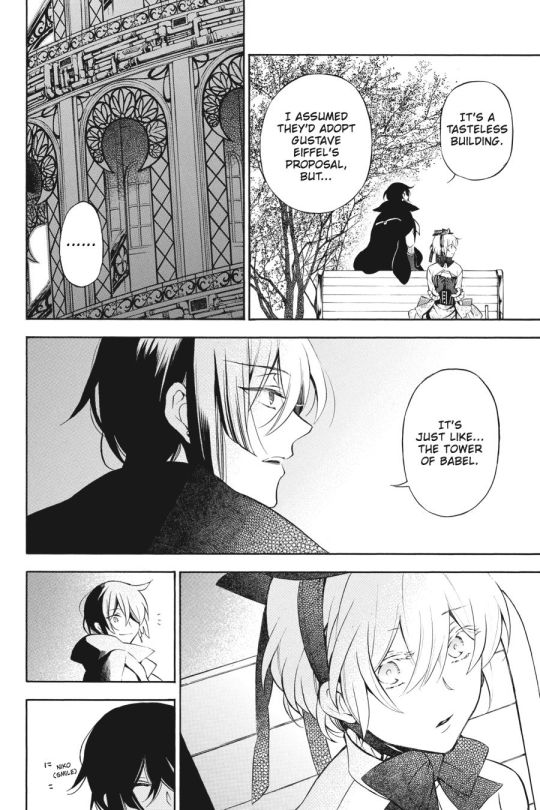
(Ch. 21)
What did Babylonian astronomers think of Aquarius? Well, they associated this constellation with the Ea. “The Great One” is his title. He’s also known as Enki, god of magic, fertility, creation, etc., who was originally a water god (and his temple name E-apsu means “house of the watery deep", idk I think it sounds really cool). The water theme is not random: Aquarius was also associated with floods. Water was sacred, but also deadly: floods were source of destruction.

Later, a Latin author Gaius Julius Hyginus quoted an Alexandrian historian Hegesianax that Deucalion is to be identified with Aquarius, "because during his reign such quantities of water poured from the sky that the great Flood resulted." Again, we see the idea of destructive flood. But where does Deucalion bring us? To Noah. Or Noé, if you will.

(Ch. 1)
Deucalion and Noah
Both Deucalion and Noah are central figures of the classical flood myth, which exists in various cultures. While these two are probably among the most popular figures, there are other examples, including Utnapishtim, who was warned by the god Ea (who also created humans among other things) about the flood and instructs him to build a boat and save his family and animals. The stories of Deucalion and Noah follow the same pattern with some minor variations. But Deucalion is the one who is associated with Aquarius, the constellation that symbolizes the coming of the flood and all its terrors, while Noah/Noé is associated with salvation of human race and all living things.

Deluge, 1864, by Aivazovsky. This painting depicts a beginning of a biblical story about the near-end of human race. It’s pretty much the same in other versions of the story.
Deucalion and Pandora
What’s interesting, Deucalion’s myth is directly related to Pandora’s myth. Deucalion is usually described as the son of Prometheus, while Deucalion’s wife Pyrrha was the daughter of Pandora. And Pandora’s myth is among the core themes of “Pandora hearts”. If we consider the possibility of VnC and PH’s universes being connected, the idea of Deucalion being Vani’s true name would also make sense… For example, this theory covers the topic.
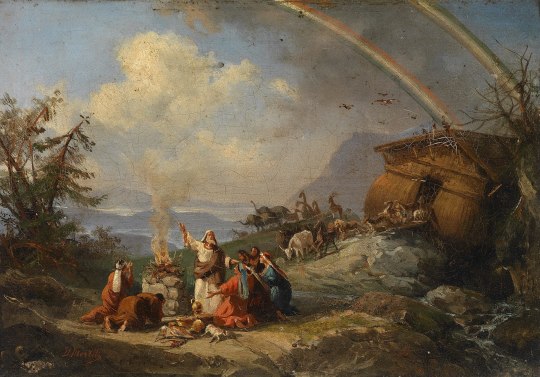

Left – Noah gives Thanks for Deliverance, 1901, by Domenico Morelli. Here we see Noah from the Old Testament, with his family, as they give thanks for their safe deliverance back to land after surviving the flood. A double rainbow signifies God’s presence.
Right – Deucalion and Pyrrha, 1636–1637, by Rubens. This painting shows a scene from the story of Deucalion and Pyrrha as told by Ovid in Metamorphoses. After surviving the disaster, they had to throw stones over their shoulders, each of which became a new human being.
Even if worlds of Pandora Hearts and Vanitas no Carte don’t exist in the same universe, there clearly is thematical relation between the two stories, one being about hope and another about despair. What’s even more interesting, there was actually a whole discourse about what’s hidden in Pandora’s jar: is it true hope or is it actually an illusion of salvation which hurts even more than actual despair? The translation of the word elpis, the spirit of hope in the jar, is actually neutral in its meaning. It’s simply “hope”, not inherently “good” or “bad”, which leaves a lot of space for interpretation in media.
Vanitas and Noé
Volume 3 cover implies that Vanitas will be marked by an Archiviste. It’s unknown whether this Archiviste would ne Noé or Machina or even some other. I hope it’s gonna be Noé, because it would break a specific border between them and it will definitely be very dramatic, but Machina might do it for the sake of obtaining information, which is her main thing. Anyway, regardless of who does this, when and why, I believe that this moment is probably the real possibility for revealing the true name of Vanitas.
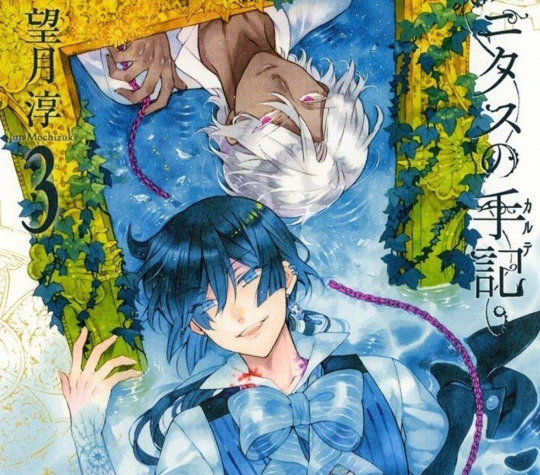
On a side note, it would also be kinda interesting if Noé gets to know Vani’s true name, but it will still be hidden from us, the readers. There’s is also a possibility that Vani’s true name will not be revealed even in this situation. His goal is to erase everything related to the Vampire of the Blue Moon, and I guess that would mean erasing everything about himself too. But in Ch1 he promises to stay here even after he is gone, so it might imply that at least someone will get to remember him — perhaps as Xxxx the human, not Vanitas, kin of the Blue Moon. Which might mean going against Luna’s request…
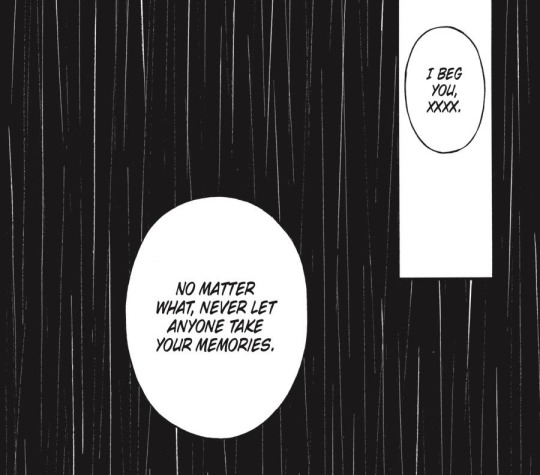
(Ch. 50)
And, well, Xxxx could de Deucalion. Just think about it: wouldn’t it be cool if both Vani and Noé were given names with similar symbolism behind it and later both assume the moniker of Vanitas?
Plus the whole “loop” thing, like “memory loop” theory and “time loop theory” (here and here) again adds to the idea of connection between them. The loop where ends and beginnings melt into each other, like Ouroboros eating its own tail. The loop between Vanitas and Noé, where they will have to understand pointlessness and hopefulness of life – and what does in mean to save and be saved.
The ultimate hope of survival becomes fleeting dream for all caught in this loop. But every dream is destined to end, as pointed by Saint Germain. And what will happen, when Vanitas and Noé will have to wake up from the dream of their own? What will prevail - death and futility of life or salvation and rebirth?

(Ch. 55)
#vanitas no carte#memoir of vanitas#the case study of vanitas#vnc meta#vnc theory#vnc vanitas#vnc noé#vnc#mochizuki jun#case study of vanitas#noe archiviste#mochijunverse#vanitas no carte meta#vanitas no carte theory
90 notes
·
View notes
Text
Since Goncharov is trending again, I want finally to share the poster I made a few months back! Unfortunately, I couldn't find the original image I used to create it (I looked for the photo, I really did! But I lost a record of it when I got my new computer). But anyway! Please enjoy this poster. I like it a lot :)
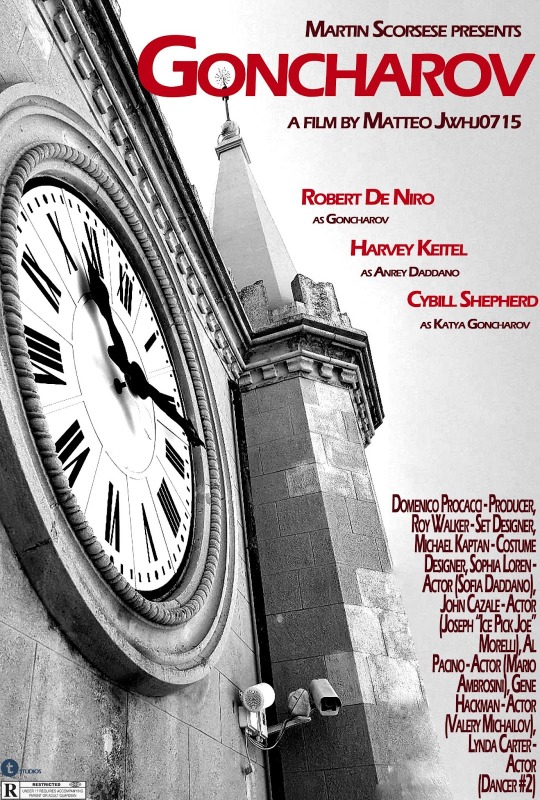
[Image ID: A movie poster for the fake movie "Goncharov". There is a black-and-white photo of a clock-tower. Near the top, text reads: "Martin Scorsese Presents / Goncharov / A film by Matteo JWHJ0715". A bit below that, text reads: "Robert De Niro as Goncharov / Harvey Keitel as Andrey Daddano / Cybill Shepherd as Katya Goncharov". Text near the bottom reads: "Domenico Procacci - Producer, Roy Walker - Set Designer, Micheal Kaptan - Costume Designer, Sophia Loren - Actor (Sofia Daddano), John Cazale - Actor (Joseph "Ice Pick Joe" Morelli), Al Pacino - Actor (Mario Ambrosini), Gene Hackman - Actor (Valrey Michailov), Lynda Carter - Actor (Dancer #2)". In the corner there is a logo for "Tumblr Studios", as well as an "R" age rating - "Restricted - Under 17 required accompanying parent or adult company". End ID]
#goncharov#goncharov movie#goncharov movie post#art#my art#movie poster#unreality#i mean. i did make this poster. but goncharov as a thing isn't real#not writing#not fanfic
392 notes
·
View notes
Text

Domenico Morelli - The Angel of Death, 1897.
16 notes
·
View notes
Text

The Cello Player by Ulisse Caputo
Ulisse Caputo (1872–1948) was a Neapolitan painter who resided in Paris.
He was born in Salerno He studied under Domenico Morelli and was a collaborator of Gaetano Esposito. Caputo first exhibited in the 1900 Venice Biennale. He painted genre subjects, often finely dressed and in intimate familial situations.
21 notes
·
View notes
Text

Dama col ventaglio, by Domenico Morelli (1873)
43 notes
·
View notes
Text

Domenico Morelli, As Tentações de Santo Antão (1878)
7 notes
·
View notes
